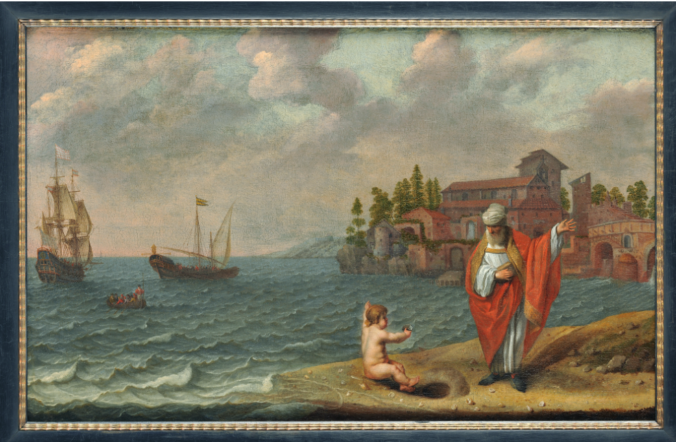On August 28, the Catholic Church celebrated the Feast Day of St. Augustine of Hippo. Recognized both within and outside of the Catholic Church as one of the greatest philosophers and theologians of all time, St. Augustine is perhaps best known for two writings: Confessions, which details the very personal drama of his faith journey; and The City of God, which explores the complex relationship between the heavenly city of God and the earthly city of the Church.
The third writing for which St. Augustine is well known is titled, The Trinity, or De Trinitate, in which he examines the history of God — and in particular, the dramatic revelation of The Holy Trinity: God the Father, God the Son and God the Holy Spirit.
The concept of God as three persons is hard to understand! It is one of the true mysteries of our faith. St. Augustine took 30 years to write The Trinity. It is interesting to think about what it must have been like, for this brilliant and faithful man, to grapple with the mystery of the Trinity. There is a beautiful story about an event that happened to St. Augustine, while he was working on the piece:
Augustine was walking along the seashore one day, thinking about and trying to understand the mystery of the Holy Trinity. He saw a small boy running back and forth from the water to a spot on the seashore. The boy was using a seashell to carry the water from the ocean and to place it into a small hole in the sand.
Augustine approached the child and asked, “My boy, what are doing?”
“I am trying to bring all the sea into this hole,” the boy replied with a sweet smile.
“But that is impossible, my dear child, the hole cannot contain all that water,” said Augustine.
The boy paused in his work, stood up, looked into the eyes of the Saint, and replied, “It is no more impossible than what you are trying to do – comprehend the immensity of the mystery of the Holy Trinity with your small intelligence.”
Augustine was absorbed by such a keen response from the child. He turned his eyes from the child for a short while. When he glanced down to ask him something else, the boy had vanished.
Some say that it was an angel sent by God to teach Augustine a lesson on pride in learning.
Perhaps the angel was sent by Jesus, reminding Augustine of the importance of remaining humble — and of retaining our childlike wonder. It is through wonder and humility that we draw ever closer to God:
For Jesus said, “Truly, I say to you, unless you turn and become like children, you will never enter the kingdom of heaven. Whoever humbles himself like this child, he is the greatest in the kingdom of heaven.” Matthew 18: 3-4
Note: Abraham Willaerts was a Dutch Baroque painter, mostly of marine and harbor scenes, who lived and worked in the 1600s. He painted the beautiful image above of St. Augustine and the small boy.

Recent Comments